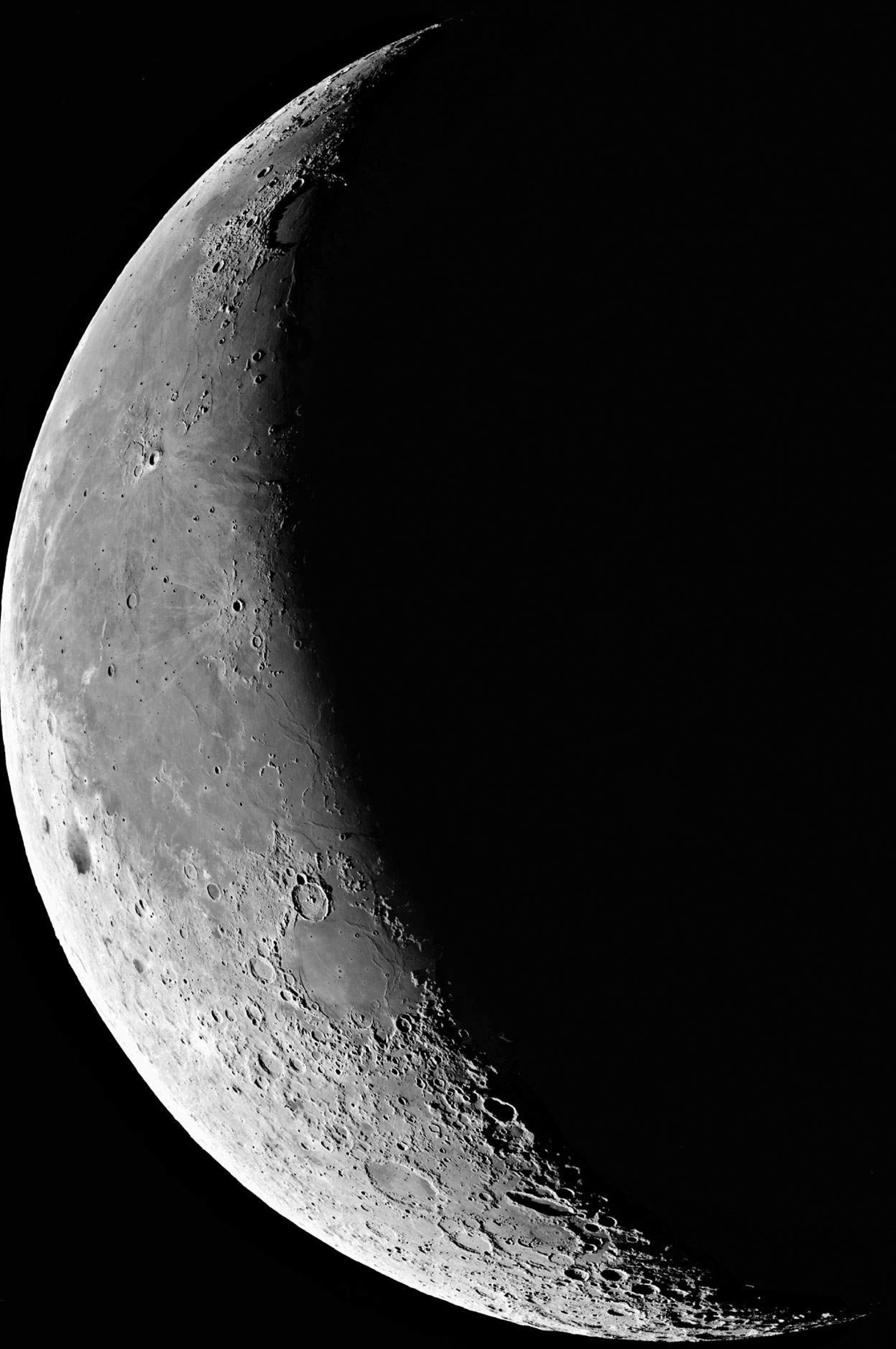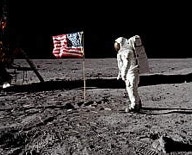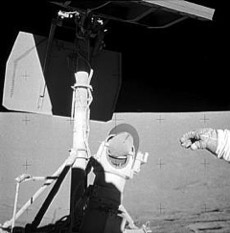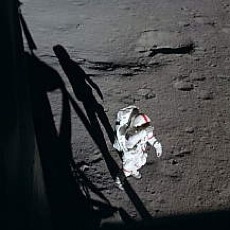

Exploring the Moon
A history of lunar discovery from the first
space probes to recent times
Repeating the feat
A second Apollo mission also beat President Kennedy’s deadline for landing a man on the Moon by the end of the decade. Apollo 12 touched down in Oceanus Procellarum only a short walk from the Surveyor 3 robot probe that had landed two and a half years earlier. Given that Apollo 11 had overshot its intended landing site by about three miles, Apollo 12’s precision landing was an impressive piece of targeting.
Astronauts Charles Conrad and Alan Bean made two Moonwalks, setting up scientific instruments and examining the long-dead Surveyor. Pictures of Conrad next to Surveyor 3 are among the most memorable of the Apollo programme. A number of parts from the probe, including the TV camera and soil-sampling arm, were brought back to Earth. Terrestrial microorganisms were found on the camera. At first these were thought to have been there since its launch and survived the harsh conditions on the Moon, but it is now thought likely that the camera was contaminated after its return to Earth.
Apollo 12’s rocks turned out to be around 3.2 billion years old, making this the youngest of the Apollo landing sites. This age difference from the Apollo 11 site, added to slight differences in composition from those previous samples, demonstrated that there had been several episodes of volcanic flooding on the Moon, and also different sources of lava within its interior. The geological history of the Moon was becoming more complex than previously imagined.
After these two successful landings, disaster struck. Apollo 13’s landing was cancelled when an oxygen tank in the Service Module exploded on the way to the Moon. Unable to turn back, the astronauts had no option but to continue towards the Moon and let its gravity swing them behind it and back to Earth. All future Service Modules were modified to prevent a repeat of the accident that nearly cost the crew their lives. The story of the mission was subsequently recreated in a feature film, Apollo 13.
Flights resumed in early 1971 with Apollo 14, commanded by Alan Shepard, America’s first man in space, flying for a second time after a gap of nearly 10 years. This mission was sent to the site intended for Apollo 13, a hilly formation called Fra Mauro, which was believed to consist of ejecta from the impact that formed the Mare Imbrium basin. The rocks were much lighter-coloured and different in composition from the dark lavas of the lowlands collected by Apollos 11 and 12. They proved to be 3,900 million years old, which is when the Imbrium basin was formed.
At the end of his Moon walks, Shepard, a keen golfer, achieved a sporting ‘first’ when he produced a gold ball from his spacesuit pocket, dropped it on the surface and took a swing at it with the handle of a sampling device fitted with the head of a six iron (he needed three attempts to connect properly). His colleague Ed Mitchell responded by making an impromptu javelin throw with a rod from the solar wind collector. Both the golf ball and the javelin ended up in a small crater nearby.

Making a grab – Conrad reaches for Surveyor 3’s camera

Apollo 14 commander Alan Shepard surveys the scene
Repeating the feat